Beginners Guide to Clay Shooting
In our 'Beginners Guide to Clay Shooting ' you'll find everything you ever needed to know about Clay Pigeon Shooting and how to get started.
Are you intrigued by the precision, discipline, and camaraderie of clay shooting? Whether you're a novice curious about this exhilarating sport or someone looking to refine your skills, the Viking Arms comprehensive "Beginners Guide to Clay Shooting" is your essential companion on this exciting journey.
Just fill in your details below to get your free guide.
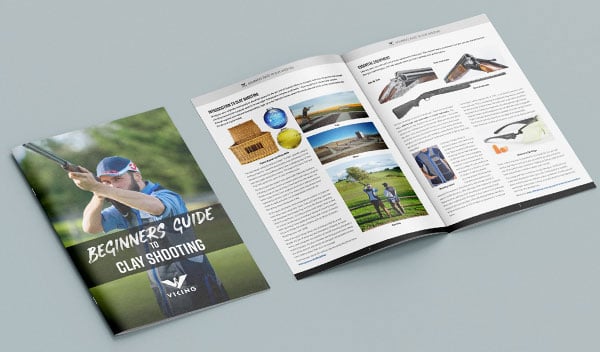
DOWNLOAD OUR
Beginners Guide to Clay Shooting
INtroduction to clay shooting
Shotguns were originally used purely to shoot live quarry for the pot, but it’s human nature to compete and over the years clay target shooting has become a popular sport in its own right. Enthusiasts compete at all levels – from small local ‘straw bale’ shoots, through regional and national championships, right up to the Olympic Games where the most talented shots in the world battle for the glory of a gold medal.
The sport began using live birds as targets. The bird - typically a pigeon, starling or sparrow - would be placed under a hat, and released on the shooter’s command by pulling a string. Later a collapsing cage or ‘trap’ was used, again released by a string - the origin of the terms ‘Pull’ and ‘Trap’ still used in the sport of clay pigeon shooting today.
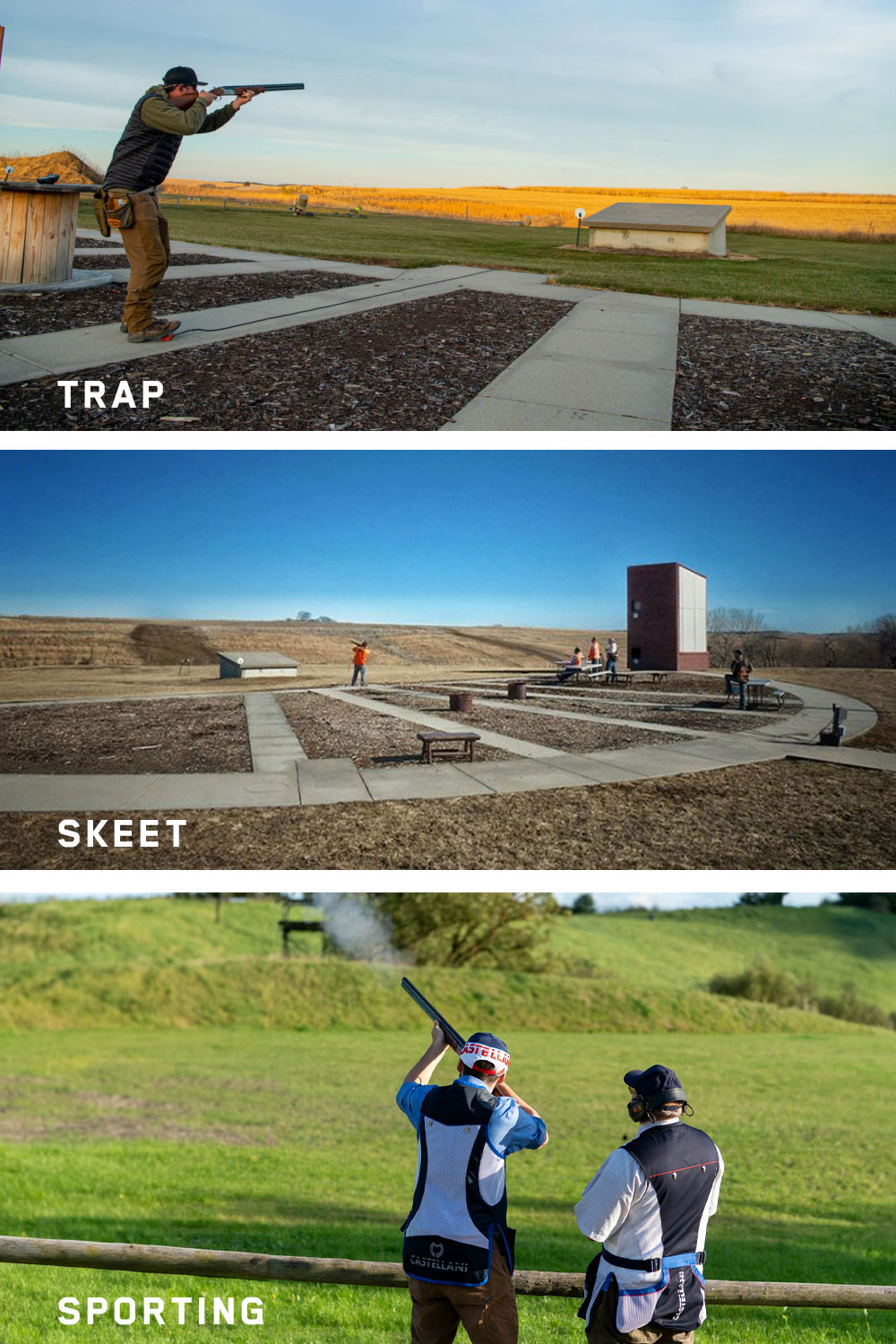
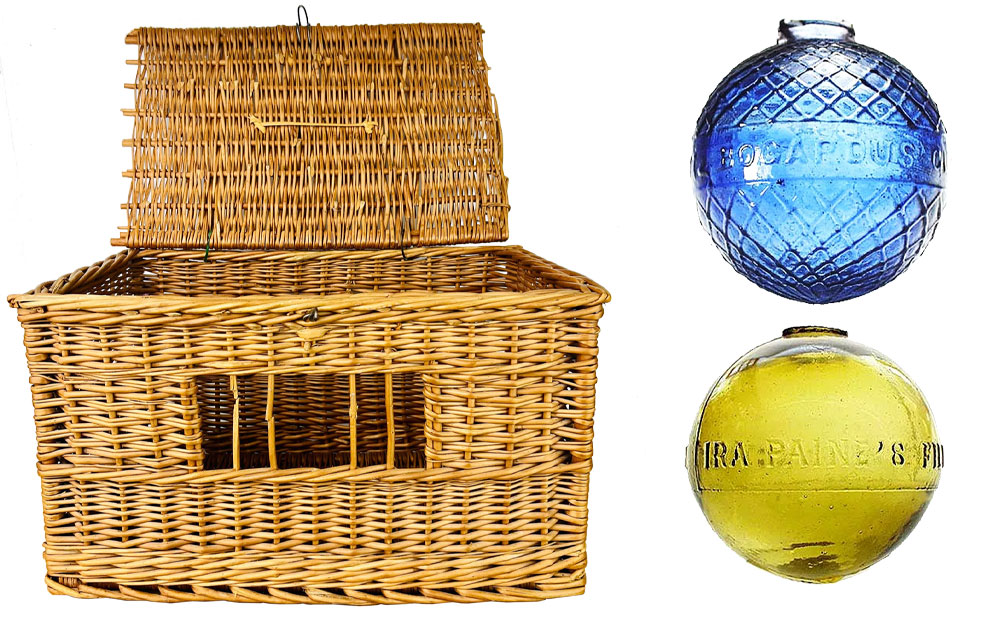
The first inanimate targets were glass balls filled with feathers, imitating a live bird. Inventors experimented with saucer-shaped targets made of clay, and these developed into the targets we know today, thrown from sophisticated auto-loading machines operated by remote control. For many years clay targets were made of chalk and pitch, but biodegradable materials are becoming more widespread today.
As the sport developed, distinct disciplines evolved, so today we have three main categories: Skeet, Trap and Sporting. Each has sub-disciplines, but broadly Trap involves the shooter standing behind a trap-house, shooting a going-away target; Skeet is shot on a semi-circular layout providing a variety of crossing targets; while Sporting is less rigidly proscribed, with a series of stands set up to imitate live quarry targets such as ‘driven pheasant’, ‘dropping crow’ and ‘rabbit’.
One of the great things about clay shooting is that it’s a real leveller. People of every age and description compete on equal terms, and a beginner can find him or herself shooting alongside a world champion. It’s also a friendly, welcoming community where you will be warmly welcomed, encouraged, and probably receive more helpful advice than you can manage!
Find out more about the various clay pigeon shooting disciplines here: www.cpsa.co.uk/disciplines
Essential Equipment
Like any sport, you will need some basic equipment to take part in shooting clays. That requires some investment, but you can get started for less than you might imagine, and only upgrade when you feel it will help your performance.
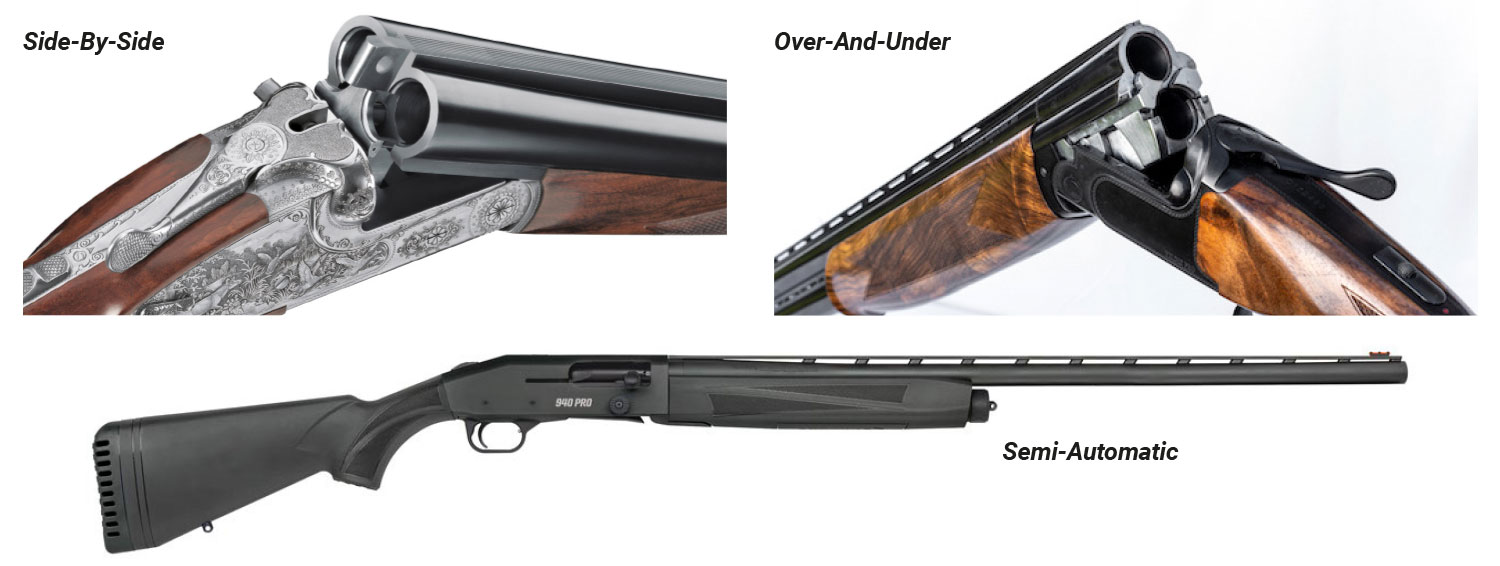
The first essential, of course, is a clay shooting shotgun. There are three basic types: side-by-side, over-and-under, and semi-automatic. The vast majority of clay shooters use an over-and-under – the name refers to the configuration of the barrels, which are set one above the other. Semi-autos are preferred by some due to their lower recoil, but are less convenient to use on a clay layout, throwing empties out to the side, and needing a safety flag to show they are empty. Side-by-sides are rarely seen outside of game shooting nowadays.
Clothing is largely down to personal choice, and needs to be suitable for the weather on the day. Most shooters will wear a clay shooting vest as their top layer, as this provides a non-snagging shoulder area to mount the gun, freedom of arm movement, as well as pockets to carry sufficient cartridges for a stand or a round of targets. A glance around any clay ground will show that Castellani have pretty much cornered the market in shooting vests, with a huge variety of colour combinations on offer, although other makes are available. Many shooters will have their shooting vest embroidered with their name together with the logos of their sponsors or preferred brand of gun and cartridge; a few will display badges denoting achievements such as 100-straight, or selection for a national team.
Some basic safety equipment, or ‘PPE’, is essential to protect your eyes and ears. This is mandatory at ‘registered’ clay shoots, and plain common sense at other times. The basics are a cap with a stout brim to protect from falling clay fragments, shooting glasses with impact-resistant lenses, and hearing protection of either the muff or plug type. There is a huge variety of products available, at a wide range of prices, but if you’re getting started on a budget then disposable
foam earplugs costing a few pence a pair are perfectly adequate.
There is little else that is essential for the beginner, but you will need a gun slip to carry your gun around the ground, and some sort of shoulder bag is useful for holding cartridges, odd items of gear and perhaps a bottle of water and a snack.
To comply with the conditions of your Shotgun Certificate you must have a purpose-made gun safe, firmly fixed in a suitable place in the house according to police guidelines. Finally, you will need a gun cleaning kit to keep your gun properly maintained and free from the dreaded rust.
More info: www.vikingshoot.com/products/accessories/castellani

Basics for beginners
Getting a shotgun certificate
Shotguns and rifles are tightly regulated in the UK, and before you can own a shotgun you will need to obtain a Shotgun Certificate issued by your local police. The process can seem daunting, but essentially you simply need to fill in an application form that can be downloaded from the police website. There will be questions about your health, any previous criminal convictions, how you propose to store your gun, etc. You will have to supply a passport photograph, and nominate someone who can act as a ‘referee’.
The police will consider your application, and you will normally have a visit from the local Firearms Enquiry Officer before, all being well, you receive your Shotgun Certificate and can buy a gun. Bear in mind that some police forces are working through a backlog, and it may be some weeks or even months before your application is processed.
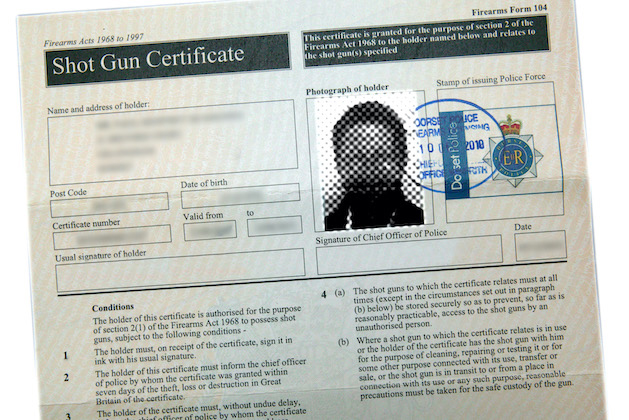
Choosing a gun
Choosing your first gun is a big step, and something that should not be rushed. Take advice from other shooters, coaches and gun shop staff, and consider the options carefully. Second-hand guns are a popular choice, but there are some very good, inexpensive guns available nowadays, many of them originating from Turkey where the gunmaking trade has taken off in recent years.
Bear in mind that your gun must be a good fit for you to shoot well. This means that when you mount the gun correctly in your shoulder, with your cheek resting lightly on the stock, your eye is looking perfectly along the rib to the target. If the gun isn’t aligned properly, your shot won’t go where you are looking (not ‘aiming’ as you don’t aim a shotgun as you would a rifle). Gun fitting is quite an art, and this is an area where you should seek expert advice at your local ground or gun shop.
Chokes and Cartridges
It’s sometimes said that it’s not the gun that breaks the clay, it’s the pattern – meaning the cloud of pellets flying through the air towards the target. A typical clay cartridge will be a 12-bore containing 28 grams (1 oz) of size 7 lead pellets. That means each cartridge fires around 340 pellets, which spread out as they fly through the air. The greater the distance, the wider the pattern spreads out.
You can see the effect if you shoot at a pattern plate where each individual pellet makes a mark on the plate. Obviously a wider pattern give you more margin for error in hitting the target, but too spread out and there will be gaps that a clay can slip through. For longer-range shots, then, we use choke – a constriction at the muzzle end of the barrel that squeezes the pellets together and keeps the pattern tighter. With experience you will find your own preference, but many Sporting shooters choose quarter choke in one barrel and half choke in the other. Cylinder (unchoked) is typical for Skeet, while Trap shooters use tighter chokes such as three-quarters and full.
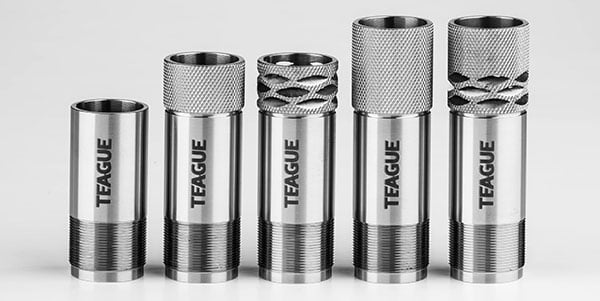
There is a move towards using steel shot rather than lead in game shooting, but at present (2023) lead is used for the vast majority of clay shooting.
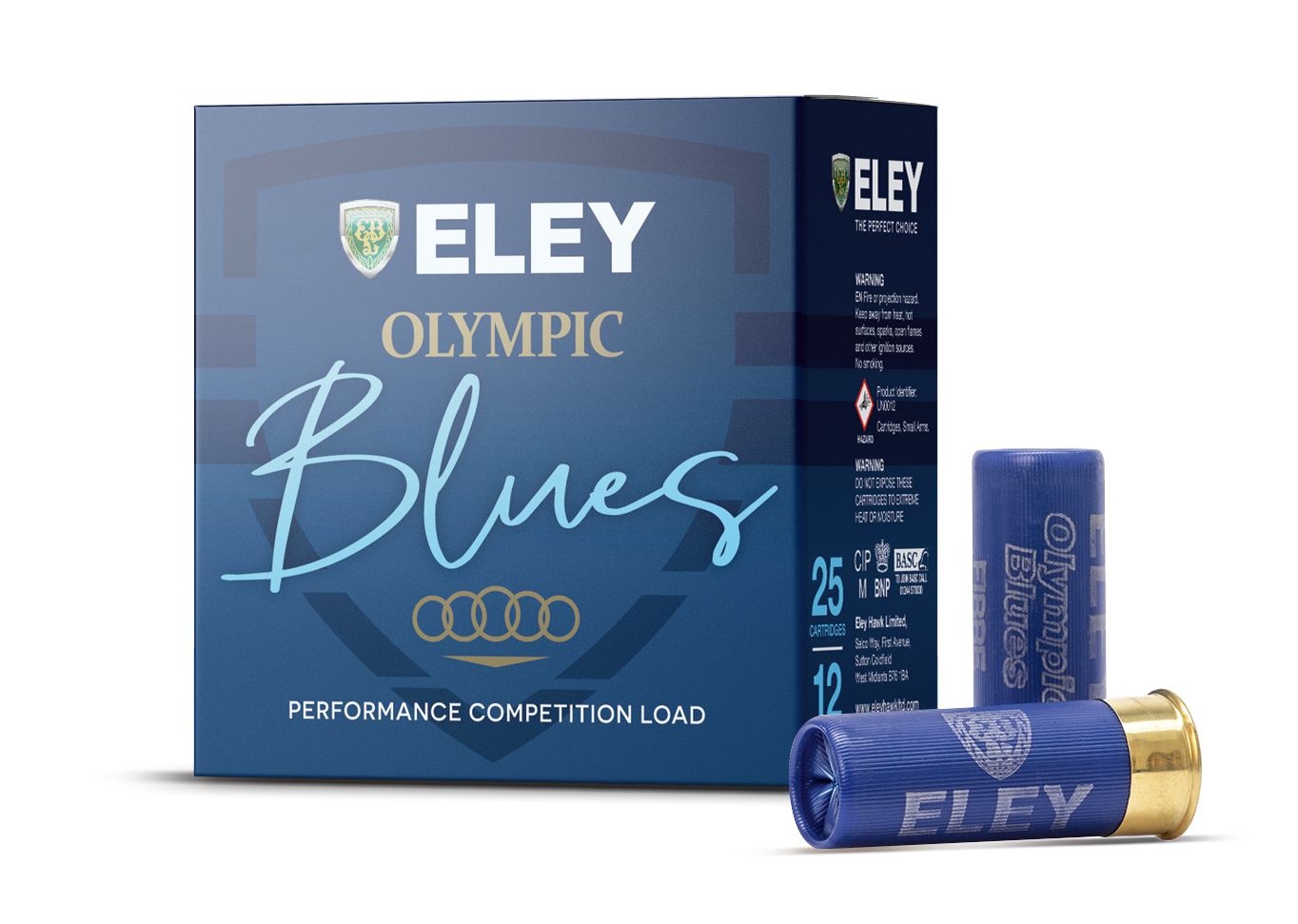
Basic Shooting Technique
Shooting technique is a huge subject, and entire books have been written on developing a good technique. The basic principle is that you must swing the gun along the path of the target, fire when the gun is ahead of the target, and keep the gun moving. The distance you shoot in from of the target is called ‘lead’ (to rhyme with ‘seed’ not ‘said’). As a general rule, the farther away the target, and the faster it is moving, the more lead it needs – for the simple reason that it will travel farther during the fraction of a second it will take for the shot to reach it.
The shooter should prepare for the target by setting his or her feet in a comfortable position facing the ‘kill point’. The weight Then turn at the waist to face the point where you first see the target clearly. Call for the target, mount and swing the gun, and fire when you see the correct lead, keeping the gun moving after the shot – known as ‘following through’.
There are three basic methods of achieving the correct lead, known by the self-explanatory names of Maintained lead, Pull-away, and Swing-through. Advanced shooters will choose a method to suit a particular target, but a beginner is best advised to stick to the Swing-through method. Whichever method you choose, it is important to move the gun along the target’s line of flight. If you fail to follow the line, you will most likely miss.

The CPSA teaches a system known as ‘The Method’ which covers such things as stance, visual pick-up point, gun hold point, and kill point (or break point, as they don’t like words such as ‘bird’ and ‘kill’). You can find out more on their excellent series of ‘How to Hit’ videos here: www.youtube.com/@cpsauk
Safety Rules
Clay shooting has an excellent safety record, thanks to a strong safety culture at grounds and among shooters themselves, ensuring that everyone follows a simple code of safety rules. Expect to be pulled up immediately by your fellow shooters if you do anything considered unsafe.
In addition to ensuring your equipment is in good order and you are in a fit state to shoot, the key points are to ensure your gun is unloaded until you are on the stand and about to shoot. Keep the gun pointed down-range, be aware of what to do in case of a misfire, and unload and open the gun before turning and leaving the stand. Check the gun is empty and place it in your gun slip before moving on.
Be especially careful any time you remove a gun from its case or slip outside of a shooting stand. For instance, you may want to show your gun to a friend in the car park, clean it after shooting, or try how another shooter’s gun feels in your shoulder. Make extra sure it is unloaded, never allow your gun to point at anything you wouldn’t want to shoot, and certainly never in the direction of other people.
For a range of safety posters and guidelines for shoot organisers see: www.cpsa.co.uk/downloads/health-and-safety/16
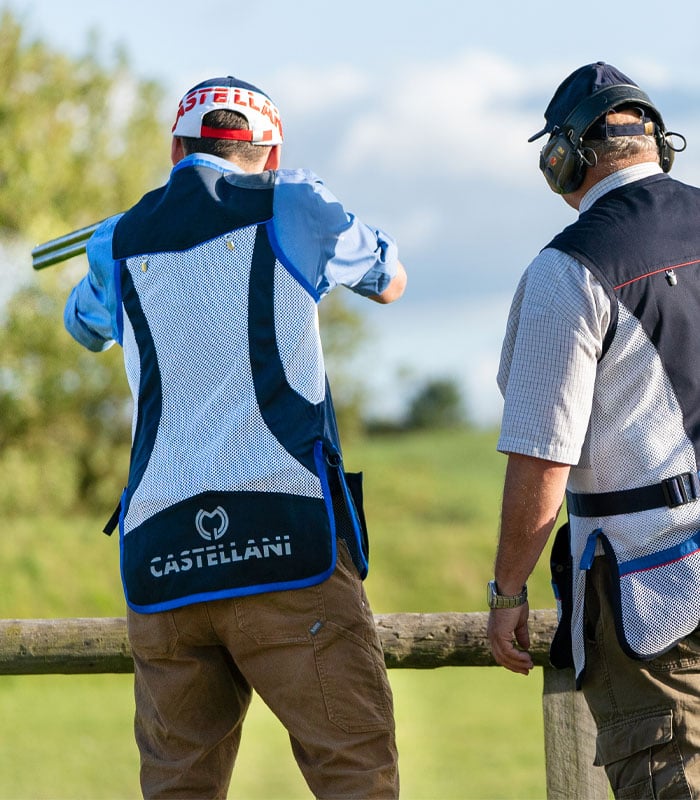
Disclaimer
The information, including text, graphics, images and information expressed in this publication are general in nature. Viking Arms Ltd assumes no responsibility for the accuracy of the information contained on or available through this website or its suitability for any purpose and such information is subject to change without notice. You are encouraged to confirm any information obtained from or through this website with other sources. Information on this website may not constitute the most up to date legal or other information.
The opinions expressed in this publication are those of the authors. They do not purport to reflect the opinions or views of Viking Arms Ltd.
Head Office Address
Viking Arms Ltd, Summerbridge, Harrogate, North Yorkshire, HG3 4BW
Contact Details
Sales: 01423 780 810 (Ext 1)
Email: info@vikingarms.com
